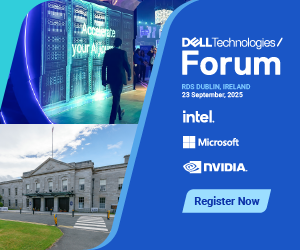Technology researchers frequently look like boffins with solutions in search of problems to fix. In particular, the commercial value of the work done by these boffins seems rarely appreciated. To correct this lopsided view of development, Accenture, the management consulting and technology services specialist, has unveiled some of the technologies being developed at the firm’s own R&D division, Accenture Technology Labs (ATL).
Among the lab’s notable successes is its predictive monitoring service. Aimed at enterprise equipment from manufacturing to transport and business systems, the service extracts sensor information and uses analytical models to predict equipment faults and sub-optimal performance levels before a system fails.
In transport in particular, where machinery routinely gets preventive overhauls, one Gartner study from 2004 said that savings of up to 60% had been seen with predictive monitoring over traditional preventative maintenance.
Persuasive mirror
Martin Illsley, ATL’s director of research, outlining recent areas of research, listed four key areas of focus: analytics and insight, human computer interfaces (HCI), intelligent device integration, and system integration.
An example of intelligent home services was where an aging population could be served by an infrastructure of multiple sensors, communications networks and artificial intelligence to monitor for and to alert to abnormal activity ranging from falls to seizures. This system included a so-called “persuasive mirror”, a device that doubled as a conventional mirror while also being an interactive, network-enabled communicator that could recognise a viewer and remind the person about medication and appointments.
The monitoring aspects were then expanded into systems that could monitor activity in other environments. Trials now in place involve monitoring employees entering a workplace. Identified through log in or access devices, staff can be tracked by machine-monitored video for abnormal activity such as unauthorised access of restricted areas or deviance from normal practises. The technique could also be applied, said Illsley, to airports where a baggage handler could be monitored for suspicious behaviour.
The monitoring system is based primarily on pattern analysis. Each identified action is given a number, and logs are then analysed for patterns.
Illsley emphasised that such systems were not just about security; they could be used to refine workplace design and layout for efficiencies and safety.
Contradictory data
Another system employing pattern analysis from the labs is a sentiment monitoring service. With much unstructured data appearing on the web every day, from blogs and personal sites to linked news services, the system analyses web content for the sentiment expressed. This can be a general trend topic-specific. Illsley said that the system had taken seven years to develop, and operational for two. With an 85% accuracy rate, it is already serving industries that need to know more about brand perception and public awareness.
Other fields being investigating include wireless sensor networks and their application to fleet management, for example. Illsley said sensors’ data processing capabilities outstripped that of systems. While such systems are already in place, their use is often limited. Problems include contradictory sensor information, which needed more work to allow intelligent middleware to resolve conflicts in sensor and probabilistic data. Accenture Labs is actively pursuing such a solution, said Illsley.
Also being examined is the decentralisation of content production. The ubiquitous camera phone, many video-capable, ensures there are new channels for content for various areas. Illsley indicated that Accenture was working on systems that used such channels for call centres or even the emergency services. Problems to be overcome include scale, as the number of devices is potentially very large.







Subscribers 0
Fans 0
Followers 0
Followers